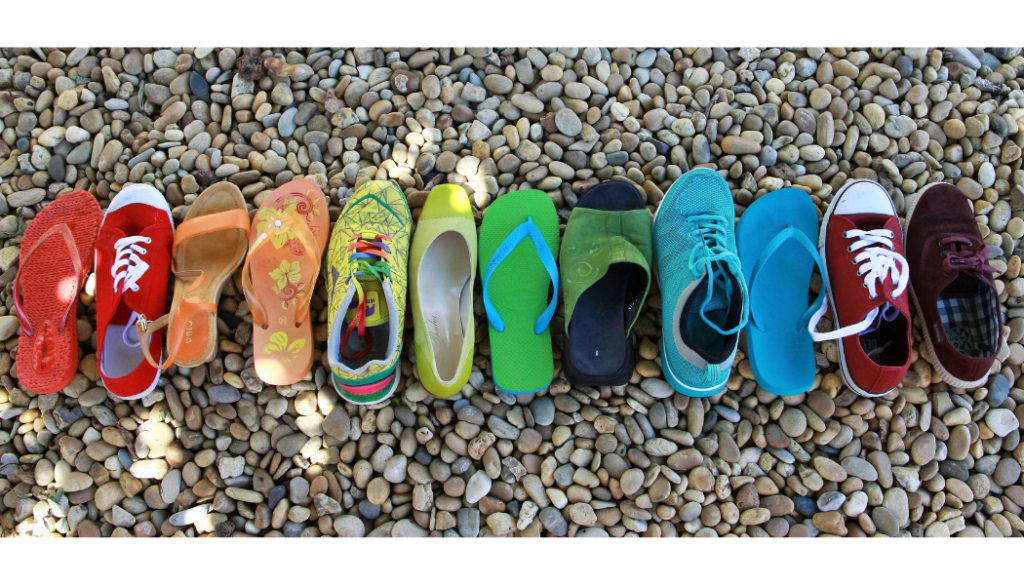
Lots of clients have been asking about shoes lately so I thought it might be helpful to revisit the articles I wrote a few years ago about how to determine whether a particular pair of shoes might work for your feet. As we all know, the right pair of shoes can make a huge difference in the way we function during the day. Shoes can be expensive. So why not save yourself time and money by learning a bit more about what your particular foot needs before heading to the shoe store?
In this 3-part series, I’ll help you to determine the optimal features of shoes for your particular foot. Part 1 will look at how your foot is constructed and what’s needed from your foot when walking. Part 2 will talk about what shoes help a person with flat feet. And Part 3 will look at what shoes can help a person with high arches in their feet.
Let’s get started with Part 1…
When it comes to determining the best shoes in which to invest, I suggest temporarily setting aside considerations of style and belief and looking instead at how your foot needs to function for optimal comfort, whether it is able to function that way based on your unique anatomy, and how your shoes can help or hinder those functions.
The foot is an absolute marvel of construction. With each step, the foot must adapt to the unique attributes of the surface you are walking on while withstanding large amounts of force. When your foot hits the ground, the ground hits you back. For every action there is an equal and opposite reaction affects our every step. Your foot as well as your entire body is affected by these ground reaction forces with every step.
In the walking or gait cycle, your foot lands on the ground and remains there as your body travels forward over your foot. Then your heel comes up and you push off to propel yourself onto your other foot. What does your foot need to be able to do while you are walking?
As your foot lands on the ground and your body travels forward over your foot, your foot needs to be flexible so it can absorb ground reaction forces to protect your knee, hip and back from these forces. It also needs to adapt to any unevenness on the surface. If the ground is slanted, the sidewalk raised or there’s a rock or twig, your mobile foot helps you keep your balance and take this in stride. As your foot prepares to propel you forward onto the other foot, it needs to become rigid. It’s more effective to push off something rigid than something flexible. So with each step you take, your foot needs to be flexible at times and rigid at times.
Take a look at your feet while you are standing…
Aree your feet flat? Or do you have a high arched foot? Because of the interlocking bone structure in the foot, a flat foot is more mobile and flexible and a high arched foot is more rigid.
If you have flatter feet, you are in good shape when the foot needs to be mobile in the early part of the gait cycle. Your foot can absorb ground reaction forces and adapt to the uneven surfaces. However, when your foot needs to be rigid, you may run into trouble.
If you have higher arched feet, you are in good shape when the foot needs to be rigid. You’ll be able to push off and propel yourself forward onto the other foot very well. However, your foot may be too rigid to effectively absorb ground reaction forces and adapt to uneven surfaces.
Shoes can help give your foot what it’s missing; more rigidity for a flatter foot or more shock absorption for a high arched foot.
Coming up in Part 2, we’ll talk about the shoe features that help a flatter foot. Thanks for reading!
